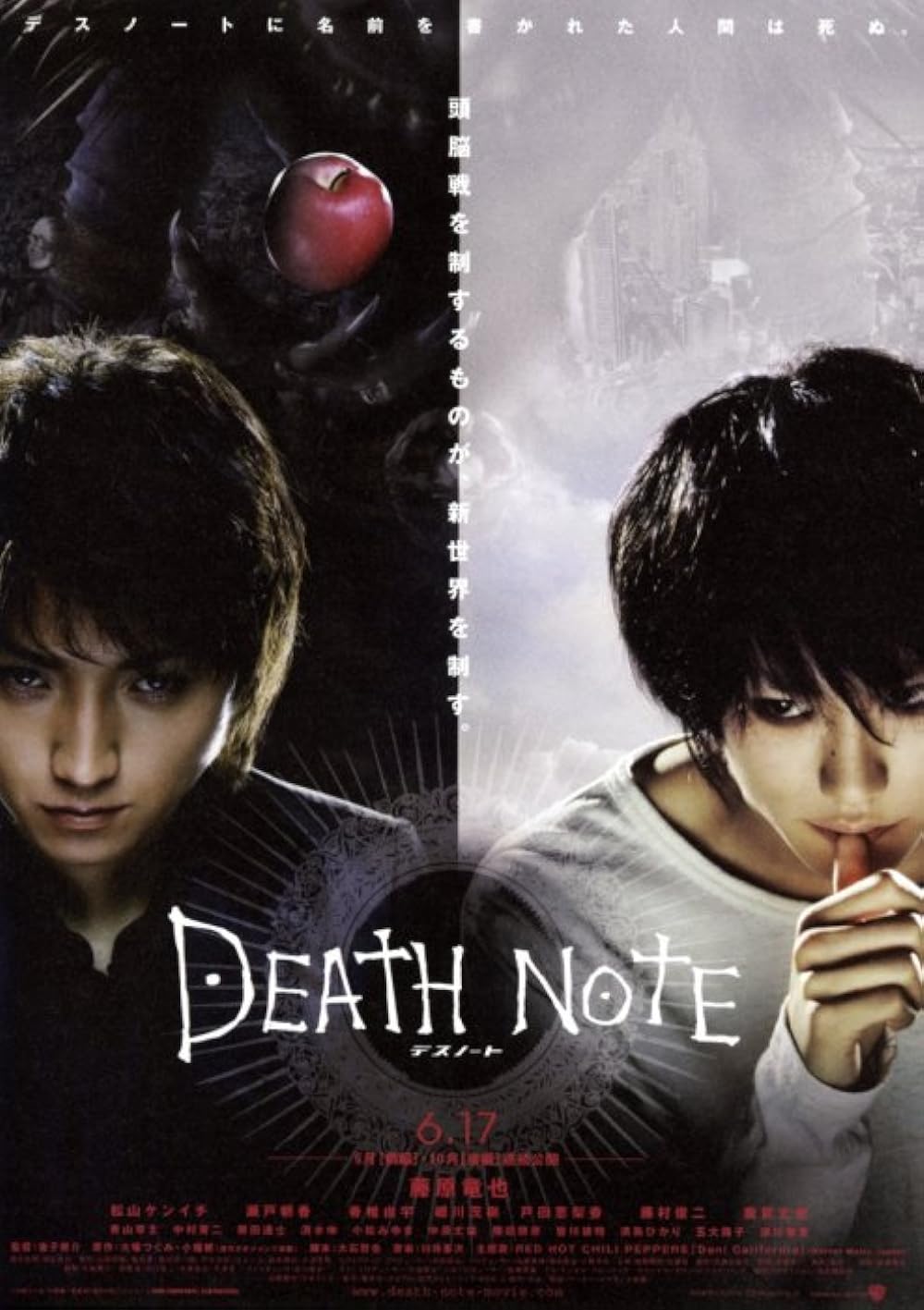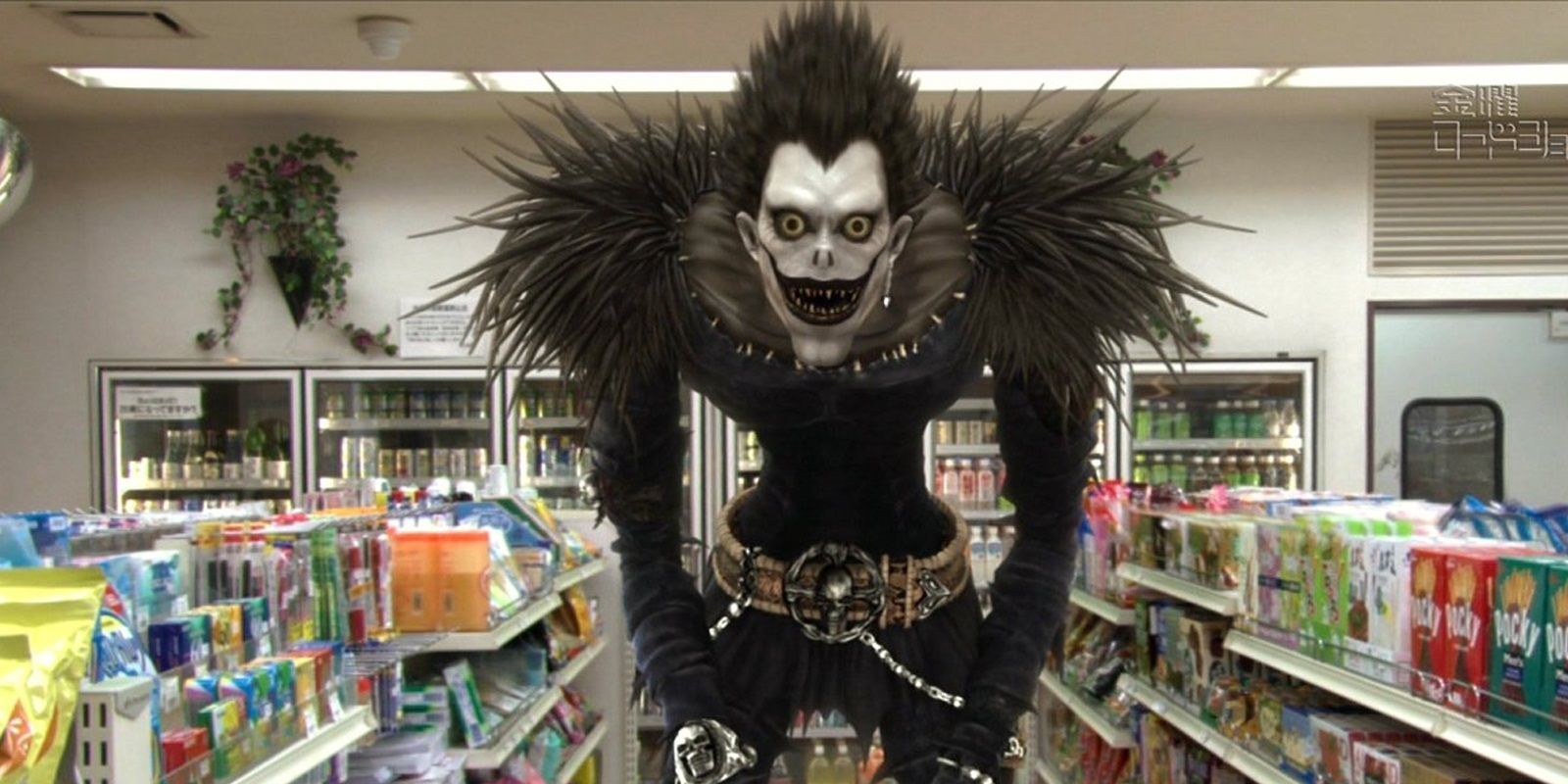The Death Note franchise, originally a Japanese manga series, has seen multiple adaptations over the years. Among the most notable are the 2006 Japanese film and the 2017 American version. This article delves into what happened in these adaptations, the latest updates, and the cultural impact of these films.
The Original Death Note (2006)

Overview of the Japanese Film
The 2006 Death Note film, directed by Shusuke Kaneko, is a Japanese supernatural thriller based on the popular manga by Tsugumi Ohba and Takeshi Obata. The plot centers around Light Yagami, a brilliant university student who discovers a mysterious notebook that allows him to kill anyone by simply writing their name in it.
Key Details
- Director: Shusuke Kaneko
- Running Time: 125 minutes
- Language: Japanese
- Box Office: $31.3 million
- Sequel: Death Note 2: The Last Name (2006)
The Plot
Light, upon discovering the Death Note, decides to use it to rid the world of criminals. He adopts the alias “Kira” and soon becomes a vigilante figure. His actions attract the attention of the enigmatic detective L, leading to a tense psychological battle between the two.
Reception and Impact
The film was released on June 17, 2006, and was well-received both critically and commercially. It grossed approximately $31.3 million worldwide and sparked interest in the Death Note franchise, leading to a sequel later that year. The film’s exploration of themes such as morality, justice, and the psychological cat-and-mouse game between Light and L captivated audiences.
The American Adaptation: Death Note (2017)

Overview of the American Film
The 2017 adaptation, directed by Adam Wingard, is an American supernatural crime thriller that reinterprets the original story. This version follows Light Turner, a high school student who finds the Death Note and uses it to kill criminals.
Key Details
- Director: Adam Wingard
- Running Time: 100 minutes
- Language: English
- Budget: $40 million
- Reception: Mixed to negative reviews, with a Rotten Tomatoes score of 36%
The Plot
In this adaptation, Light Turner discovers the Death Note and, with the guidance of the Shinigami Ryuk, begins his quest to eliminate criminals. Unlike the original, this film incorporates more elements of teen drama and departs significantly from the source material, which was a point of contention for many fans.
Reception and Criticism
Premiering on Netflix on August 25, 2017, the film received generally negative reviews. Critics and fans criticized it for its departure from the original story and the inclusion of unnecessary teen drama elements. However, the film did feature notable performances, especially Willem Dafoe as the voice of Ryuk.
What Happened: Key Differences Between the Films

Characterization of Light Yagami/Turner
The portrayal of Light in both films is a significant point of divergence. In the Japanese version, Light Yagami is a calculated and composed university student. In contrast, the American version presents Light Turner as a high school student whose motivations and actions are driven more by personal angst than a sense of justice.
Tone and Style
The Japanese film maintains a darker, more serious tone, staying true to the original manga’s psychological thriller roots. The American adaptation, however, incorporates more action and dramatic elements, which some critics felt diluted the story’s impact.
Adaptation Choices
The 2017 film made several notable changes to the source material, including altering character backgrounds and motivations. These changes were intended to make the story more accessible to Western audiences but ended up alienating many fans of the original manga and anime.
Latest Update: Continued Interest in the Franchise
Renewed Interest
Despite the mixed reception of the American adaptation, interest in the Death Note franchise remains high. The continued popularity of the manga and anime, along with the Japanese films, ensures that Death Note remains a significant cultural touchstone.
Future Projects
Rumors of new adaptations and projects continue to circulate, indicating that the franchise’s appeal endures. Fans eagerly await any news about potential new films, series, or other media related to Death Note.
Video Viral and Leak Video Controversy
The Viral Video
Following the release of the 2017 film, a video viral surfaced online, highlighting some of the most criticized scenes from the adaptation. This video gained traction on social media platforms, fueling further debate about the merits and flaws of the American version.
Leak Video Controversy
A leak video purportedly showing behind-the-scenes footage of the 2017 film’s production also emerged. This video provided insights into the decision-making process behind some of the controversial changes, sparking discussions among fans and critics about the adaptation’s direction.
Cultural Impact of Death Note
Influence on Pop Culture
Death Note has had a profound impact on pop culture. The themes of justice, morality, and the use of supernatural power have resonated with audiences worldwide. The iconic imagery of Light writing names in the Death Note and Ryuk’s menacing presence have become staples in the realm of anime and manga.
Memes and Parodies
The franchise has inspired numerous memes and parodies, further cementing its place in popular culture. Scenes from both the Japanese and American films have been reimagined and satirized, showcasing the story’s wide-ranging appeal.
Reflections on the Adaptations
The Japanese Original
The 2006 Japanese film is often lauded for its faithful adaptation of the manga and its compelling portrayal of the psychological battle between Light and L. It set a high standard for subsequent adaptations and remains a favorite among fans.
The American Version
While the 2017 American adaptation received criticism, it also introduced Death Note to a broader audience. The film’s mixed reception highlights the challenges of adapting beloved source material while trying to appeal to new viewers.
Conclusion: The Enduring Legacy of Death Note
Final Thoughts on the Films
Both the Japanese and American Death Note films offer unique interpretations of the same story. While the original remains a classic, the American version serves as a reminder of the complexities involved in adapting popular media across different cultures.
Moving Forward
As interest in Death Note continues, it is essential to celebrate the franchise’s successes and learn from its missteps. Future adaptations should strive to honor the source material while exploring new creative directions.
The Power of Storytelling
Ultimately, Death Note exemplifies the power of storytelling. Its exploration of complex themes and moral dilemmas has captivated audiences for years and will likely continue to do so. By engaging with these stories, we can better understand the human condition and the consequences of wielding power.
